Project Overview
Out of an abundance of caution and in light of recent research showing the possible presence of heavy metals in Victorian-Era book cloth, the University of Illinois Library is advising all staff and patrons to use caution when handling books in original cloth covers dating from 1800-1899. Heavy metals may be transferred to the skin while handling materials and could therefore pose an ingestion risk. The University Library’s Preservation program is currently investigating the scope of the risk within our various libraries and planning the implementation of permanent safety precautions to protect our staff and patrons. Until such a time as we know more about which books (types of heavy metals present, known cloth colors, years of production, etc.) pose a health risk, we encourage all persons to exercise caution when handling original 19th Century bindings.
Monographs published between 1800–1899 will be temporarily unavailable while we identify the scope and potential risk. Many of these titles are available digitally through HathiTrust (linked within our catalog), and we encourage patrons to utilize digital access to these materials whenever possible. Meanwhile, we are assessing individual volumes and working to get as many back in circulation as fast as possible. If patrons or library employees encounter 19th Century monographs in their original bindings (see below for guidance on identification of original publisher cloth bindings) please wear disposable nitrile gloves when handling. Gloves are readily available at circulation desks where such materials have been identified.
If you handle these materials, please:
- Do not eat, drink, or smoke while handling materials
- Do not rub your eyes, nose, or touch your face while handling materials
- Wash hands with soap and water immediately after handling materials
Project Planning – Summer and Fall 2023
- Beginning immediately, we are posting signage and other public and staff notices to increase awareness of the risk these materials may pose.
- Over the summer of 2023 the Preservation Services Unit will administer a survey of materials in publicly-accessible, open stacks to better quantify the number of items that may still be bound in original covers (i.e. have not been rebound in the last century).
- From those, we will be working with the Materials Research Laboratory on campus to perform XRF analysis on a wide range of colored Nineteenth Century book cloths to determine which color cloth bindings contain which, if any, heavy metals.
- In partnership with campus Employee Safety and Health and the Division of Research Safety, the Library will then determine how best to further protect users and staff for the future.
- Preservation Services will also work with closed/restricted access collections to determine reading room and other access policies for these materials.
Identifying Nineteenth Century Publisher Cloth Bindings
Publisher cloth bindings from the Nineteenth Century are often noted for their embossed decoration and stamping, but can also be relatively plain. The cloth used in these covers is colored with a wide variety of pigments or combinations of pigments as well as fillers such as starch to stiffen the cloth and make it impermeable to glues. Original covers can be semi-gloss or matte, are often blind or gold stamped, and may include decorative illustrations in one or more colors. Volumes may also include decorative colored end pages and edge decoration. An example, below, is the Tallis’s history and description of the Crystal Palace, and the Exhibition of the world’s industry in 1851 (image courtesy Winterthur Museum).
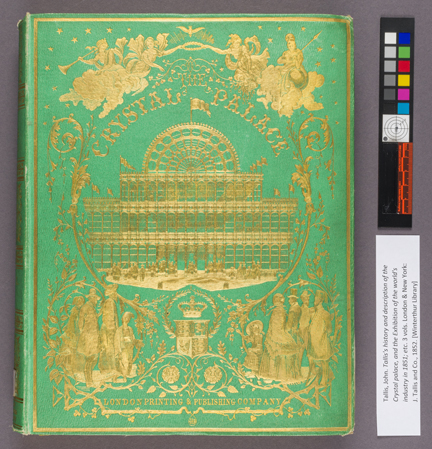
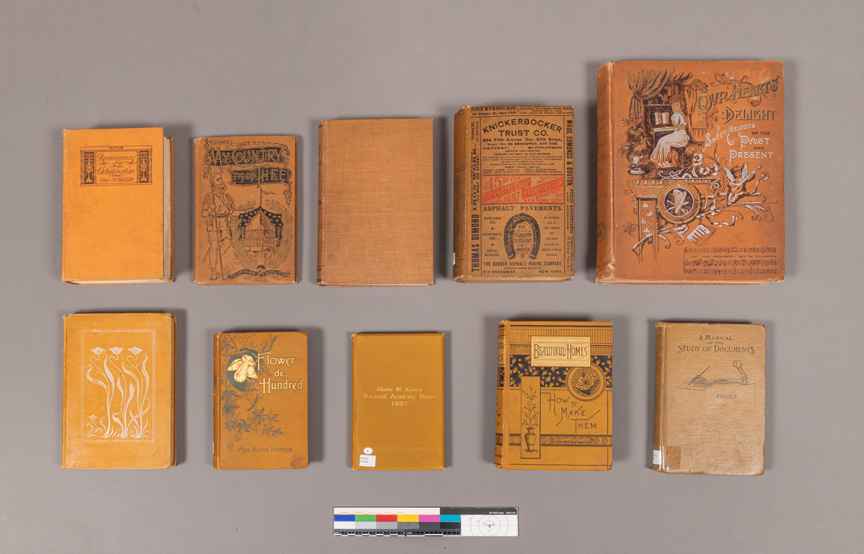
For other examples of Nineteenth Century publisher cloth bindings, see
- Cloth, gold, ink, and style, National Library of New Zealand
- Bound to Please: American Cloth Bookbindings, 1830–1910, Rare Book School
- Judging a Book by Its Cover: The Art of the Publishers’ Binding, Miami University Library
- Judging a Book by Its Cover: Gold-Stamped Publishers’ Bindings of the 19th Century, Columbia University Libraries
Bindings that are NOT Nineteenth Century Publisher Cloth Bindings
Many books in our library’s collections published between 1800 and 1900 have older cloth bindings, but this does not mean that they are original publisher cloth bindings. It has long been a practice of university and college libraries to rebind books as a method of repair. Older library bindings are often made of cloth, but may also be some combination of cloth, leather, or paper. While the cloth is colored and often dull in appearance, the covers are often plain with gold or white spine stamping and often have a University of Illinois stamp at the bottom of the spine, as seen below. Rebound items likely do not have original decorative end pages, but may retain original edge decoration (gilding, solid color, marble, etc.) with pigments that could contain heavy metals. If you are uncertain, please handle the book as if it may contain heavy metals.
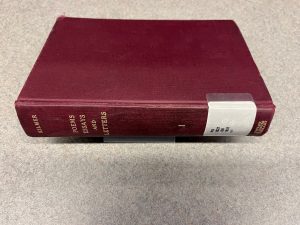
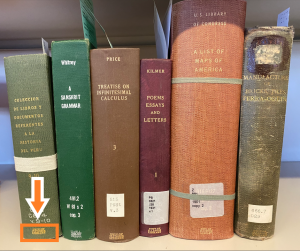
Frequently Asked Questions
For a quick tutorial on recommended glove removal technique, please watch the a brief video, Disposable Glove Removal Instructions, created by the University of Illinois Division of Research Safety.
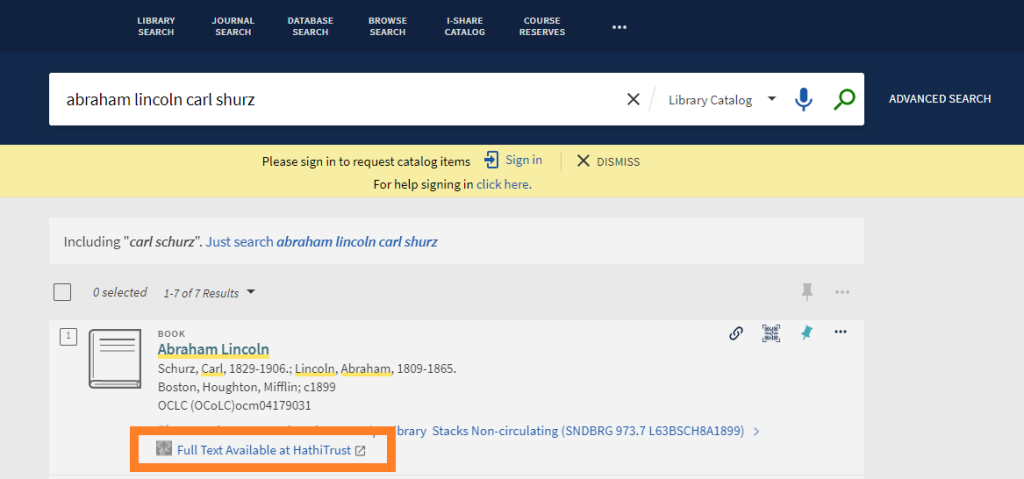
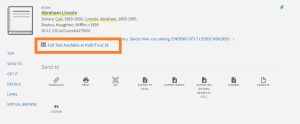
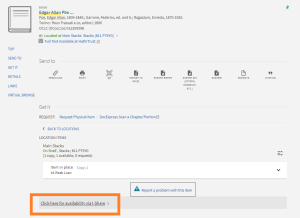
If an item from the Library’s circulating collections is not available through I-Share or ILL, please use the Public Domain Digitization Request Form to request digitization. Digital Reformatting staff will assess the condition of the item to determine whether it can be scanned. If requesting digitization for more than 10 items, please contact the Digital Reformatting unit digibb@library.illinois.edu.
You may also pick up a zip-top bag and pair of disposable gloves from the Circulation Desk on the second floor of the Main Library.
If you are unable to pick up the items at the Main Library, please email ui-lib-heavymetal@mx.uillinois.edu and Preservation Services staff will contact you to discuss arrangements, including if you have a book and want to return it, but are not currently local.
- Email: hmurphy@illinois.edu
- Phone: 217-333-3758